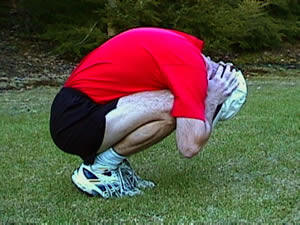- Lightning
Safety - Rules to
Live By - Places Not
To Be - If You
Get Caught - If Someone
Gets Hit - More
Information
- Don’t be the highest object around and stay away from the highest objects near you.
- Move away from sources of water such as lakes and streams.
- Thunderstorms are the most dangerous as they approach. When outdoors, identify and stay within traveling range of a safer area when possible. Employ the “30–30 Rule” to know when to seek a safer location. The “30–30 Rule” states that when you see lightning, count the time from the flash until you hear thunder (5 seconds per mile). If this time is 30 seconds or less, go immediately to a safer place. If you can’t see the lightning, just hearing the thunder means lightning is likely within striking range. After the storm has apparently dissipated or moved on, wait 30 minutes or more after hearing the last thunder before leaving the safer location.
- Tents and dining flies are NOT considered safe. Move outdoors.
- Mountain tops, summits, ridges and cliff tops.
- Avoid standing or sitting on tree roots.
- Overhangs, shallow caves, ditches, gullies, streams, and open water.
- Tall trees, poles, large boulders and high objects.
- Open areas, fields and meadows where you might be the highest object.
- Get off the summit or open area and below the tree line if possible.
- Once below tree line, seek out a low spot below clusters of small trees and stay away from large trees, cliff faces and streams.
- When in groups, disperse the group so that ~20’ of distance or more separates each person.
- Remove your backpack and other equipment, placing it on the ground and away from you.
- Get as low as possible by squatting down with your feet together. Hug your knees and cover the ears (protects hearing) until the storm passes. This position will give lightning a path through the extremities while avoiding the heart. Do not lie down.
- If unconscious, evaluate the need for CPR or Rescue Breathing.
- Dress any wounds or electrical burns. Always check for two, an entry and an exit point.
- Check for broken bones and spinal injuries.
- Give fluids to conscious victims.
- Send for help and evacuate the victim as soon as possible.
The information above was complied from several internet resources to form these guidelines. For more information on lightning safety, visit the following Web sites:
ORGANIZATION |
WEBSITE |
National Weather Service |
|
National Lightning Safety Institute |
|
‘USA Today’ Newspaper |
|
N.J. Office of Emergency Management |
|
Lightning Injury Research (University of Illinois at Chicago) |
|
Lightning Strike and Electric Shock Survivors, Intl. |
|
Sports Medicine |
http://sportsmedicine.about.com/library/weekly/aa040402a.htm?rd=1 |
| Global Atmospherics, Inc. (National Lightning Detection Network) | www.LightningStorm.com |
| Home Security | http://homesecurity.net/lightning-safety-tips/ |
